Once the go-to stores for the Mumbai's burgeoning community from the Karnataka city, the city’s Mangalore stores are finding fewer takers for their kori roti and sandige

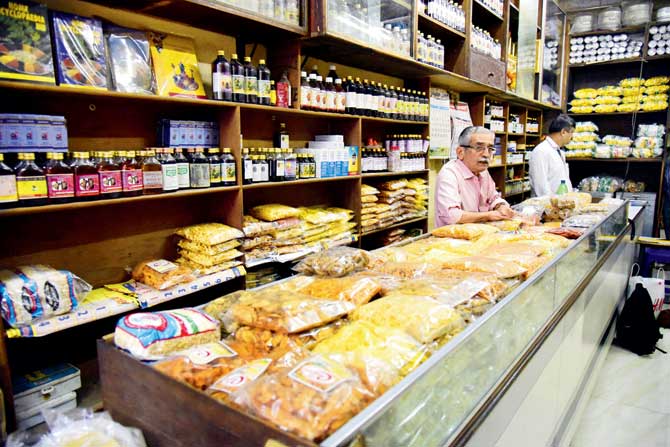
The Mangalore Store, Mahim
On a Tuesday afternoon, when we walk into Sera Ladies’ Fashion, located in the labyrinthine Sai Bazar Shopping Centre, Santacruz (W), owner Nitin Mascarenhas is in the midst of closing a cracker deal. “These customers have come all the way from America. So please give me a few minutes,” he requests us while unspooling a sequined material for them. The white table is strewn with glittery lehengas, and the shelves behind us occupy neatly folded dress materials.
ADVERTISEMENT
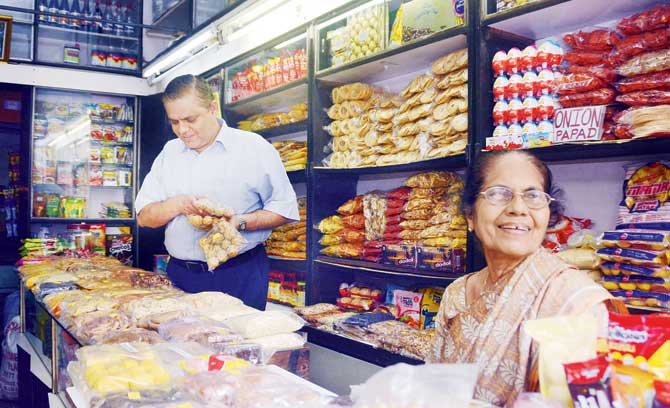
Nitin Mascarenhas with his mother at the Mangalore Store in Mahim
However, a year-and-half ago, the store didn’t look anything like this. The transparent wooden closets stacked Uddinahittu (urad flour seasoned with yoghurt) and sweet dishes like maddi (halwa made of Bengal gram dal and jaggery), kaai holige (pancakes) and undae (laddu). The floor had jute sacks filled with ukda tandul (parboiled rice), russet-coloured grains that were considered healthier than brown rice. There was no air conditioner, but an old-fashioned fan that had seen better times.
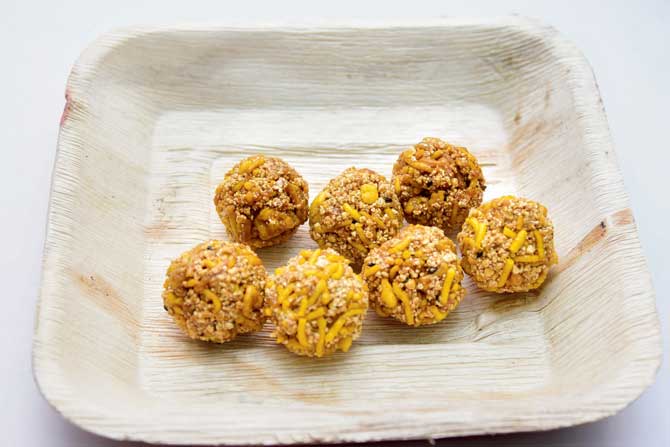
Ashtami undae, made of jaggery and groundnuts, better known as ‘travelling ladoos’ as people carry it while travelling. Pic/Shadab Khan
In 2014, Mascarenhas accepted that The Mangalore General Stores, first opened in 1977, had become a loss-making venture. Like most other Manglorean shops in the city, this too had fallen out of favour with a community that no longer depended on traditional staples.
Once central to Mumbai's legacy and spawning all over the city, the Mangalore Stores were over 200 in number till the 1990s. Today, their count stands at a mere 40. Save for Mahim, there are no Mangalore stores in south Mumbai – even in Konkani pockets like Girgaum and Gamdevi. The one in Mazagaon, the last surviving Mangalore store in South Mumbai, shut shop last year after 53 years. Owner Ronnel Goveas and his wife Lavia admit age and slack in business made it difficult to run the store.
Back to roots
Nitin Mascarenhas' mother, Theodora Doreen’s face lights up when a customer strolls into her Mangalore Variety Store opposite Paradise Cinema in Mahim. This was the first store, established in 1952 by Mascarenhas' father Louvis Basil Salvadore Mascarenhas. In fact, it is also the city’s first ever Mangalore store.
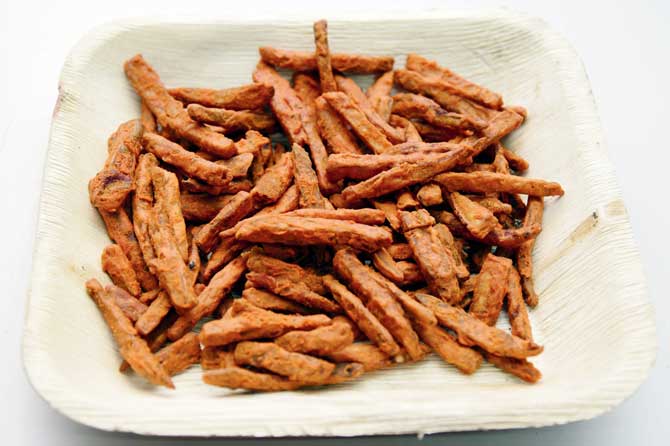 Sonte or sweet potato chips at Goregaon Mangalore Store
Sonte or sweet potato chips at Goregaon Mangalore Store
“Today, we get a maximum 10 customers a day. But it was my husband’s last wish that we run this store because of its sentimental value,” says the 78-year-old. Doreen’s husband, who hailed from Valencia, Mangalore, sparked of the trend when he realised that the number of Mangloreans migrating to Mumbai was increasing. “In the 1950s Bangalore was not the job hub it is today and, with Karnataka sharing a border with Maharashtra, it became easier to move to Mumbai,” explains Mascarenhas.
The store stashes goods ferried from Mangalore. Every alternate day, a bus that has journeyed 1,000 kilometres over 24 hours, delivers goods to all of Mumbai’s Mangalore stores, right from Mulund to Mira Road. “We keep exclusive Mangalorean food items like kananga chips made of jackfruit, and sonte prepared using sweet potato chips that you won’t find elsewhere,” Mascarenhas says, opening a packet. Despite being fiery red in colour, the crispy sonte don’t burn a hole in your stomach. The sweet potatoes are dipped in a batter of gram flour and masala, and then deep fried.
“Today, people are becoming health conscious so they avoid sonte. My grandchildren don’t touch it,” he jokes.

Dried fish is usually used in chutneys
The 49-year-old recalls that till two decades ago, his clients belonged to the Bunts, Saraswat Brahmins and Mangalorean Catholic communities. “This was their way of staying connected with their roots,” he says. Now, however, with inter-caste and community marriages, the connection to traditional Mangalorean cuisine is fading, he feels.
This might be one of the reasons why at Prabhakar Nayak’s Mangalore Store in Goregaon’s Tilak Nagar, Mangalorean delicacies like vadi (rice based crispy, crunchy fritters) and traditional Konkani pickles like appemidi (a tender mango exclusive to Karnataka) share shelf space with general groceries like bread and potato chips. “Although we have a significant Mangalorean population, it became necessary to introduce other items in order to keep the shop afloat,” says Nayak, who set up the shop in 1991.
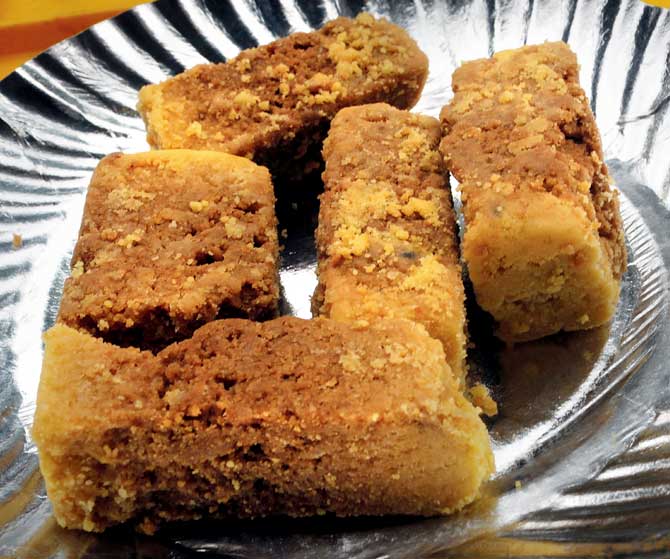
Mangalorean Mysore pak. Pic/Datta ÂÂu00c2u0080ÂÂu00c2u0088Kumbhar
While we’re there, customer Banta Shetty, is purchasing atrash, a sweet dish made with rice, ginger and jaggery. Shetty, has been a patron for over 25 years. “I also come here for Mangalore Holige (puran polis) because they taste different from the Maharashtrian variety,” he says. Nayak agrees. “I feel it’s the water that makes the difference. We also add dalda in the items. I tried using the ghee we get here, but it doesn’t taste the same,” he says. The difference is visible even in the Mysore Pak, which is nothing like the pure ghee variety made popular by Matunga’s Sri Krishna. This one has a centre the shade of caramelised sugar with the colour fading into butterscotch near the edges. The centre has a mealy taste of besan (chana atta/roasted chick pea flour) with a mild burnt flavour. “This is one of the highest selling items here. Unlike the pure ghee variety, which gets heavy after two bites, this one is easy on the tummy. You can even finish the entire packet in one go,” laughs Nayak. But it’s the kori roti which sells the most. Paper thin and crispy, the kori roti is a special kind of bread, which is made of rice paste and then dried. These are later made into sheets that are broken into pieces. When soaked in chicken curry, the rotis absorb the gravy and turn soft. “This dish is a hit at corporate events which I cater,” he says.
Staying afloat
Nayak’s staff, till about six years ago were local Mangaloreans. Today, they are from UP and Bihar. “It’s a challenge finding people because the job involves waiting at the highway for hours for the lorries carrying food. It’s almost a 15-hour duty that people aren’t ready for. Moreover, Mangalore has developed and Mumbai is not an attraction anymore,” he says.
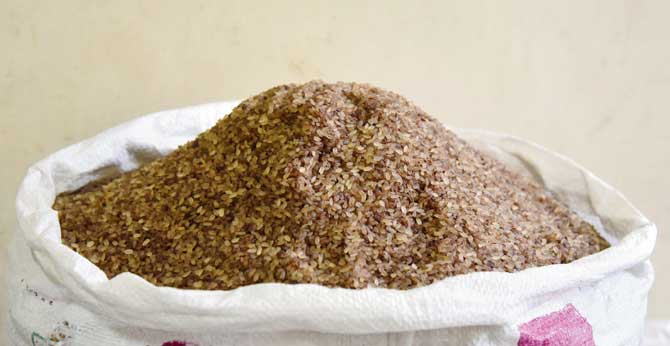
Ukda tandul at Kherwadi Pic/Shadab ÂÂu00c2u0080ÂÂu00c2u0088Khan
From the six odd Mangalore stores that dotted Goregaon, the count has gone down to three. “I hear two more might shut down in the next two months because the owners are finding it difficult to run the business,” Nayak tells us.
However, at Amrith Kini’s a spacious 800 square feet Mangalore Store inside Kherwadi’s chaotic bylanes in Bandra, business is largely decent. Despite being located in a predominantly Muslim locality, Kini’s clientele drops by even from areas as far as Vasai and Virar. “These are people who have bought from us for decades now, so there’s a sense of loyalty. While I agree there’s a slump compared to say 10 years ago, there are no red flags yet,” says Kini, who took over the shop from his uncle two years ago.
The shop has everything from Kele Halvo (banana halwa), Sannas, a toddy-infused idli and sheviyo (rice noodles) to mirsaange happolu (papads made from Bedgi chillies) and Patrado (savoury colocasia leaf rolls). “Even vegetables found in Mangalore — gul (green brinjal), kook (Chinese potato) and bimbal (a close relative of carambola) — which are seasonal, are available. You’ll get them during winter,” he informs us.
The mezzanine floor stocks the dry fish, which is very popular in Mangalorean cuisine. “You can swirl it into a chutney or fry with marinated masala, but the Thor or the Dry Fish is considered ideal during monsoons when obtaining fresh catch is almost next to impossible,” he says. The store has also Ayurvedic medicines for diabetes, cough, delivery and digestion. “Everything here is from Mangalore, including the medicines. We are trying to stay true to the name for as long as we can,” he smiles.
 Subscribe today by clicking the link and stay updated with the latest news!" Click here!
Subscribe today by clicking the link and stay updated with the latest news!" Click here!







